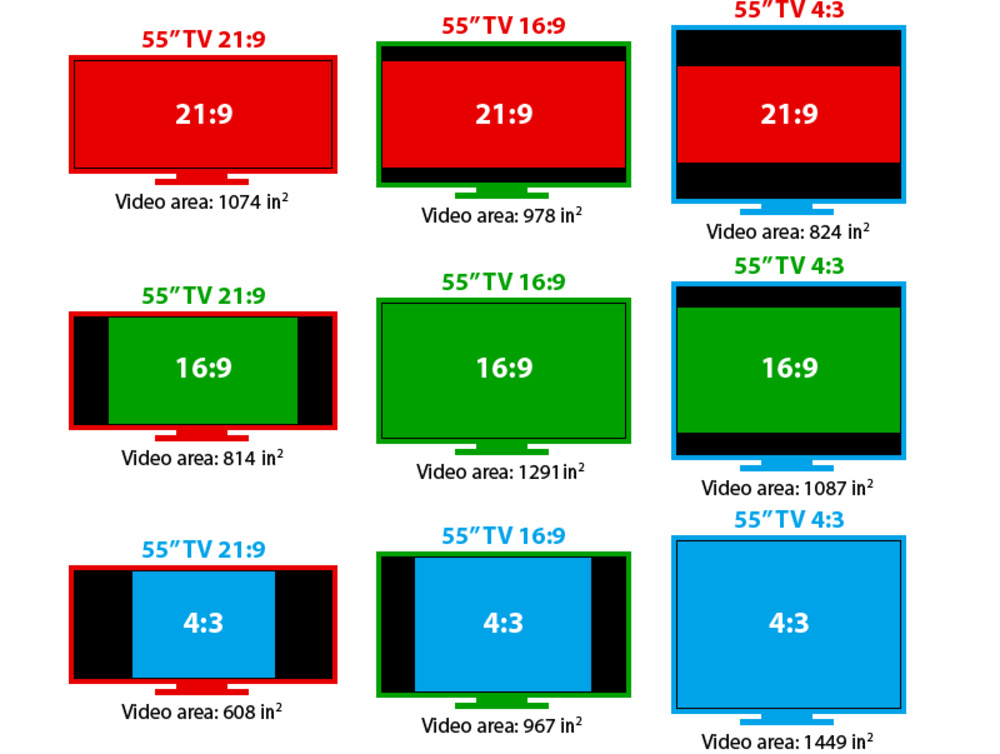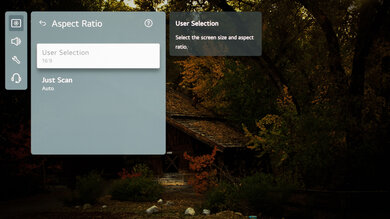
The aspect ratio is the ratio between the width and the height of an image. It defines the overall shape of an image, and it's usually presented as W:H, where W is the width, and H is the height. When you fire up your favorite movie on your brand new TV, you might notice black bars on the top and bottom, even though your TV is brand new. Why is that? Although you might not pay much attention to it, video content exists with many different aspect ratios, and when there's a mismatch, you end up with black bars on the sides or top and bottom of your screen.
What Is the Aspect Ratio?
As we mentioned above, the aspect ratio is simply the ratio of the width of the horizontal axis relative to the vertical axis. As it's a ratio, it has no units and is expressed as two numbers with a colon between them, like 2:1. Every type of image has an aspect ratio, whether we're talking about a photo, movie, or computer game.
Common Aspect Ratios
There's no universal standard aspect ratio for everything, but there are many common ones used for different content. Below are just a few examples of common aspect ratios used in the industry. There are others, but these are most of the common ones that you'll find in use today.
The cinema standard aspect ratio of 2.39:1 is common for theatrical movie releases, but streaming services often use other aspect ratios. TV shows used to be made using a 4:3 aspect ratio, which is a lot more square than current TVs, which almost always have a 16:9 aspect ratio.
It's also common for content to use a mix of different aspect ratios for cinematic effect. The movie Interstellar, for example, uses both cinematic widescreen shots (2.39:1) and IMAX (1.43:1) scenes. The final aspect ratio used is primarily a creative decision, but there may be other factors involved, like the cameras used or the target audience. Netflix, for example, requires all of their original content to use a maximum aspect ratio of 2:1, with few exceptions.
| Aspect Ratio | Uses |
|---|---|
| 1:1 | Square, often used on social media |
| 4:3 | 20th-century content |
| 1.43:1 | Full IMAX aspect ratio |
| 16:9 | Most modern TV content |
| 1.85:1 | Film/TV |
| 1.90:1 | Digital IMAX |
| 2:1 | Netflix original content |
| 2.39:1 | Cinematic widescreen |
| 21:9, 32:9 | Ultrawide computer monitors |
IMAX
IMAX movies and theaters are a complete ecosystem that encompasses everything from cameras, speakers, room shapes, screen finishes, and even film types. More importantly, though, part of IMAX's proprietary system is their own aspect ratio. IMAX uses a few different ratios to accommodate different types of rooms, but there are two major ones: 1.9:1 and 1.43:1.
- 1.9:1 is meant for more standard digital projectors and is used in IMAX Digital theaters. It's a bit taller than the standard Cinema 2.39:1 ratio.
- 1.43:1 is the more iconic ratio. It's incredibly tall and almost square in shape. This is what IMAX is most known for since the screens are usually much larger than normal cinema theaters, and the height makes them a very immersive experience.
What Happens When the TV Doesn't Match the Content?

When the aspect ratio of the content you're trying to watch doesn't match the aspect ratio of your TV, you'll usually end up with black bars. Depending on the type of mismatch between the picture and the display's ratio, the black bars appear in different places. Content wider than the screen it is played on will have horizontal black bars called "letterboxes," while content that is taller will use vertical bars called "pillar boxing."
Best Settings
If the black bars bother you, unfortunately, there's no magic solution that can remove them without altering the image. There are a few options, though, including:
- Cropping the picture: This is the equivalent of zooming. You can adjust your TV to simply cut off parts of the image, either the top and bottom or a bit from the sides, depending on the aspect ratio, and then zoom what's left. This approach has the advantage that there's no distortion to the image. The source feed is simply cut to fit the aspect ratio of your display, but there's a loss of details, and you might not see everything you're supposed to see in the shot.
- Stretching: This retains all the information, but it distorts the image to fit your screen.
Different TVs have different settings for this, so here's a table with the different options found on different brands, as well as their specific name. Some of them have two types of zoom; either two levels of crop or one of them combines both zoom and stretch at the same time.
 |
 |
 |
 |
Gaming
Games have aspect ratios, too, but since they're generated by the source, it's a bit different from cinematic content. A console or PC can dynamically adjust the aspect ratio to match the display, whereas movie content is fixed. Even with games, some content will still be locked to a specific aspect ratio, so you might see black bars on cutscenes, for example.
Ultrawide aspect ratios like 21:9 or even wider 32:9 are increasingly common on gaming monitors as they provide a more immersive gaming experience, giving you a wide field of view. In some games, this can even give you a competitive advantage, so there are games that don't support these wide aspect ratios, and you'll see black bars on the sides of the screen. These ultrawide aspect ratios aren't limited to gaming monitors, either, as many TVs on the market in 2025 have virtual aspect ratio settings for gaming, so you can make your TV "pretend" to be a 21:9 monitor, for example.
Conclusion
Nowadays, the vast majority of TV shows are made and distributed using a 16:9 aspect ratio, and so is every TV. Movies are usually produced in a widescreen 2.39:1 aspect ratio, which results in horizontal black bars above and below the image on standard TVs. Computer monitors with a 21:9 aspect ratio are very common now, but despite multiple attempts by manufacturers, this has never caught on for home use with TVs, mainly because it results in vertical bars on the sides of TV shows.


